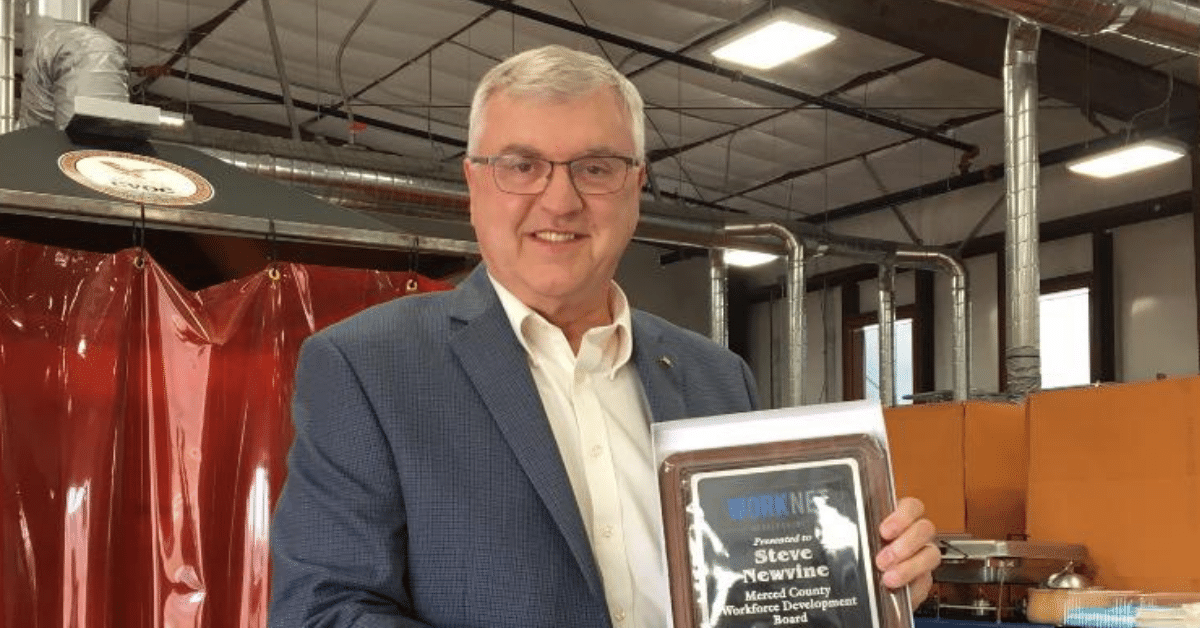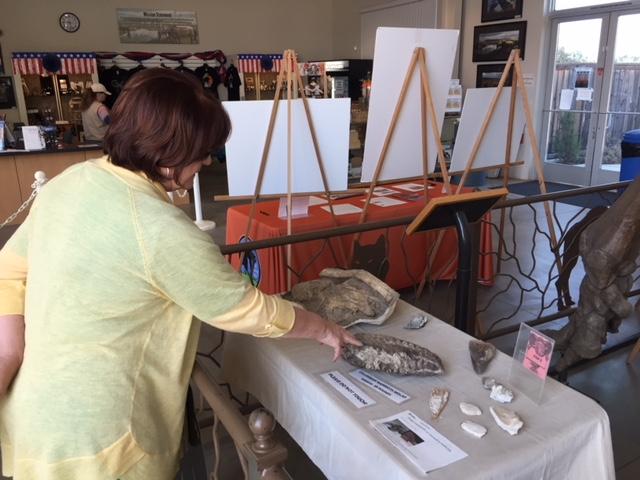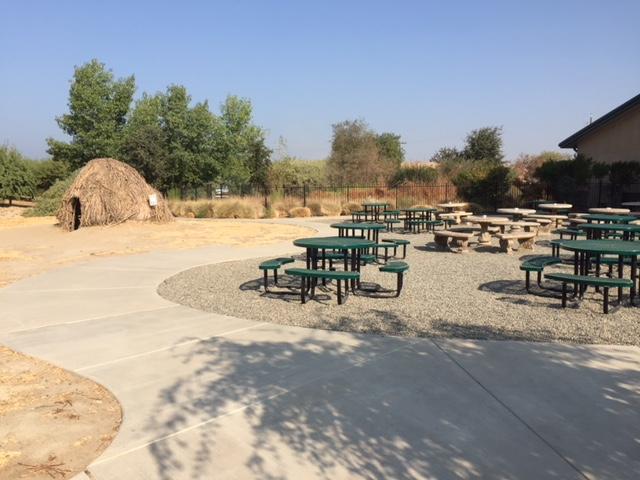
Veterans Memorial Signs Pay Tribute to Merced’s Heroes
Signs Along Veterans Boulevard Call Out 80 Military Killed in Action
Signs Along Veterans Boulevard Call Out 80 Military Killed in Action. Photo by Steve Newvine.
Chances are family members of US Army Private Cornelius W. Tuyn are no longer in our community.
The same can be likely said for US Army Mechanic John R. Veary.
Both lived in Merced. Both lost their lives in World War I.
Thanks to the City of Merced, both are being remembered.
Chronologically, they are the first veterans to be honored in the City of Merced’s Memorial Plaque initiative.
*By Veterans Day on November 11, eighty signs will be lining a broad section of M Street in the City of Merced.
One of eighty memorial signs honoring veterans who lost their lives in US military service. Each sign names a service member from the City of Merced who was killed in action. Photo- Steve Newvine.
Among the men whose names appear on the signs is US Navy Corporal Robert M. Crowell who lost his life in World War II.
He was born in the same month that Private Tuyn was killed during World War I: October 1918. Crowell who served in the US Navy, died on July 2, 1944.
The signs are memorials to members of the armed services killed in action who were from the City of Merced. The memorials cover service members from World War I on up to the war in Afghanistan.
The signs have white lettering over a blue background. Individually, they recognize a soldier, his rank, branch of service, and years served.
Collectively, they make a very strong statement as to how our community shows respect to those who gave their lives defending our country.
“They are all from the City of Merced and all members who died in combat zones,” says Mike Conway, the City of Merced Information Officer.
These white on blue signs are on utility poles up and down M Street. Each one recognizes the service of a soldier from the City of Merced. Photo: Steve Newvine
Army Private Tuyn and Mechanic Veary are the only two Merced residents known to be killed in action during World War I.
Thirty-seven of the eighty soldiers memorialized on the signs served in World War II. The signs include the names of thirteen soldiers killed in the Korean War, twenty-one from the Vietnam War, and four from Operation Iraqi Freedom through the war in Afghanistan.
Among the Korean veterans is US Air Force Captain Ralph A. Ellis, Junior. Captain Ellis died on July 21, 1950.
The memorial to fallen veterans was a natural next step in the City of Merced’s journey to pay tribute for the contributions of all who have served in the military.
In recent years, Merced City Council renamed the bridge on M Street spanning Bear Creek to Veterans Memorial Bridge.
A section of M Street near the bridge now carries the name Veterans Boulevard.
In the most recent stage of renovation for the bridge, five flag poles were installed representing each of the five branches of the Armed Forces.
Flags from those branches of the military will now be flown on the bridge during special occasions and at other times to honor veterans.
Part of the list naming the eighty soldiers from Merced who were killed in action in our nation’s wars. Photo: Steve Newvine
The City’s Department of Public Works has been posting the new signs along M Street.
Of the twenty-one soldiers listed among the veterans who died in action in Vietnam, five were Marines.
That list includes Lance Corporal Juan B. Valtierra who was killed on January 5, 1966.
It’s an ambitious undertaking, and it will be an ongoing task to find, verify, and post memorials to other City of Merced veterans who may not be on the current list.
“We don’t believe it is a complete list,”Mike Conway says.“We are seeking the public’s help in making it complete.”
The city staff has started this project with the names of 80 military personnel from the City who have died while serving during combat.
One complication is limited records on World War I Veterans.
That is why Assistant City Manager Stephanie Dietz says her team needs help from the community.
“If your loved one was a City resident who died in battle and is not on this list, please let us know.”
The current list of the eighty City residents being memorialized is posted at www.cityofmerced.org/veterans.
The most recent death memorialized on the signs is US Army Private First Class Luca C. Hopper. Private Hopper died on October 30, 2009.
More names will be added as City staff, working with local veterans groups, verifies other City of Merced residents who were killed in action.
More names may be added if there are more deaths of City residents serving in the current war in Afghanistan. The names I chose to use in the column represent four branches of the armed services: Army, Air Force, Navy, and Marines.
I selected one from each war America has fought since World War I, and I included two for World War I as there were only two in that category. Hopefully, when we see these signs we remember not only the soldier whose name appears, but all the men and women throughout the country who made the sacrifice.
Soldiers like Army Private Tuyn and Mechanic John R. Veary are remembered today, more than one-hundred years after they were killed in action thanks to this effort by the City of Merced.
We are grateful to these brave men for their service and proud of the sacrifice from all our veterans.**
Steve Newvine lives in Merced
He remembers his Uncle Bill Newvine who served in Vietnam in the book Finding Bill, available at Lulu.com
Making History at the Fossil Discovery Center
Madera County’s museum houses fossils from the 1993 Fairmead Mammoth discovery.
The Fossil Discovery Center of Madera County. Photo by Steve Newvine
Inside the main entrance of the Fossil Discovery Center, the visitor gets a glimpse at a reproduction of a Columbia Mammoth. That generally drops the jaw of a typical school aged explorer.
“The students are amazed as soon as they walk in through the main entrance,” staff person Dawn Guthrie says.
We’ve been reading and hearing a lot about the Fossil Discovery Center of Madera County.
The organization is in the middle of a big project with three Madera County Rotary clubs to restore the former Mammoth Orange stand to a site on the Center grounds.
The Orange Mammoth stand restoration is drawing attention to the Center’s work of supporting and promoting paleontology. The Center was built in the years following the discovery of mammoth fossils at the site of the Fairmead landfill. The landfill is across the road from the museum entrance.
The San Joaquin Paleontology Foundation was formed in 1993 shortly after the mammoth fossils and others from the Pleistocene era were discovered. Support from the Madera County Board of Supervisors and grants made the construction of the facility possible.
Since opening in 2010 the Center has hosted an estimated ten-thousand students annually who come in buses from area schools.
Executive Director Michele Picina looks at some of the exhibits at the Fossil Discovery Center. Photo: Steve Newvine
The Center’s Executive Director Michele Picina is a retired school principal from the Madera Unified School District.
She’s always had an interest in archaeology, so when the opportunity to serve the Center came her way, she jumped at the chance.
“The Center is devoted to paleontology,” she told me this summer. “I believed this would be the closest I could get to archaeology so this has been a real adventure for me.”
The Center gets visitors from all over California, with most of the school student patrons coming from Madera, Merced, and Fresno Counties.
“But our reach goes beyond those three counties,” says Dawn who sets up the tours with area schools. “We get Turlock, Bakersfield, Stockton and several other cities making plans to bring school buses with students to the Center.”
A Fossil Discovery Center volunteer shows an exhibit to a visitor. Photo: Steve Newvine)
A typical school tour divides the class into four sections. Each section is assigned a docent and a portion of the Center.
The sections rotate so that every student sees everything the Center has to offer with no one feeling as though they are lost in the crowd.
Students view where fossils are brought in for examination by paleontologists. As anyone with a passing interest in the physical sciences knows, this work requires time and patience.
The Center is helped by volunteers; many of them have a background in paleontology.
Many of the fossils discovered in the Fairmead landfill site are stored behind these locked cases. Photo: Steve Newvine
In another section, a visitor can see some of the fossils that have been recovered from the Fairmead landfill site.
More than fifteen-thousand fossils from the site have been found since the first discovery in 1993. Fossils from the Fairmead discovery site are locked behind glass cases. Those exhibits are considered fragile and best handled by experts.
Behind the main building, the Center has a dining area, and two unique outdoor exhibits: a Yokuts house and a Water Resource Exhibit. Photo: Steve Newvine
There are plenty of things to see and explore outside the Center building. Behind the building is the Pleistocene Water Resource Exhibit.
The exhibit is certified by the National Wildlife Federation as a Wildlife Habitat.
It presents a scaled down experience of what the terrain in this part of the Central Valley might have looked like in the Pleistocene era.
There is a re-creation of a Yokut house near the Water Resource Exhibit. Valley Yokuts were the largest Native American tribe in California with an estimated sixty-thousand living in the region.
A house like this one is made from fourteen thousand tules and would take approximately one-hundred-twenty-five hours to build.
On the side of the Center is a simulated archaeology dig site where children can try a special kind of hands-on science. The digs allow students to experience what the real scientists experience in the field.
The Fossil Discovery Center of Madera County. Photo: Steve Newvine
Over the years, the Center has added new features to enhance the visitor experience. A recent partnership brought in a display that explores water in the San Joaquin Valley.
The Center also has a strategic alliance with the Sierra Mono Museum in North Fork, Madera County.
The Fossil Discovery Center of Madera County was founded as a natural next step for the San Joaquin Valley Paleontology Foundation.
“There was such diversity of life here in the region during that era,” Michele says. “Sloths, camels, llama, elephants, and horses were all common here.”
And don’t forget the mammoths.
Columbia mammoths define the discovery of the first bones in the Fairmead landfill site from 1993.
So popular was that discovery that the orange stand on highway 99 was named the Mammoth Orange hamburger stand.
From the front entrance of the Fossil Discovery Center, a visitor can see the Fairmead landfill where the first Columbia Mammoth bones were discovered in 1993. Photo: Steve Newvine
The Fairmead area embraced the mammoth discovery back in the 1990s, and the Center is doing everything it can to maximize the connection between that discovery and the future of the facility.
The Foundation would like to see steady increases in the numbers of school trips to the Center, and more visitors from throughout California.
The Center recently hosted Madera County teachers for a reception to kick off the new school year and to showcase the offerings. The facility is available as a meeting and conference space to the public.
Expansion is always a possibility if the demand for more visitor space grows and financial support increases. The Center is positioned as a community resource.
So if you haven’t experienced seeing the wide eyes of a child brighten up to the sight of a life-sized mammoth skeleton reproduction, come and see it yourself.
You will see why the Fossil Discovery Center of Madera County is making history in the Central Valley.
For more information on the Fossil Discovery Center:
go to MaderaMammoths.org
Or call 559-665-7107.
Join the Center for Fossil Fest on October 20. Free admission and a free pumpkin for the first 100 families.
Steve Newvine lives in Merced.

















To explore Steve Newvine's complete collection of books, simply click on the link below.
CLICK HERE
Steve is also open to delivering speeches for service club programs and other public speaking engagements.
Contact him at: SteveNewvine@sbcglobal.net